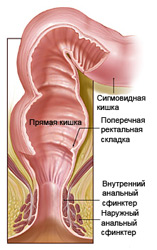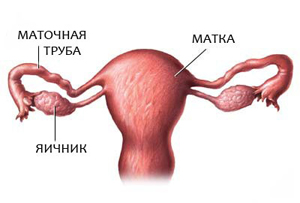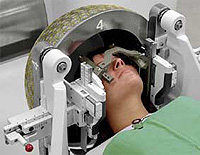Hearing the diagnosis «Cancer kidney», The first thing I want to know is what stage? And it is really important, because life depends on this question. How defined by the stage of kidney cancer and how to understand the doctor's written diagnosis - you will find out by reading this article.
Content
 Tumors, including malignant do not spare no organs, including kidneys. Kidney cancer accounted for from 2 to 3% among all cancer diseases, and among the malignant neoplasms of the organs of the urogenital kidney cancer ranks third, yielding only the prostate and bladder cancer in the frequency.
Tumors, including malignant do not spare no organs, including kidneys. Kidney cancer accounted for from 2 to 3% among all cancer diseases, and among the malignant neoplasms of the organs of the urogenital kidney cancer ranks third, yielding only the prostate and bladder cancer in the frequency.But phrase «Cancer kidney» - These are not just two terrible words, these words contain many different information, the main thing is to be able to recognize it. After all, everyone knows that if the disease is already available, then cancer of the first stage is always better than cancer, for example, the fourth stage. How classified kidney cancer and what it happens? Like all malignant education, kidney cancer is classified for several groups of signs - on the cellular structure of the tumor and its prevalence in the human body (stage).
It would seem why such difficulties and for which all these classifications are needed. But for what. Different types of cancer classification allow you to plan treatment necessary in one way or another and with greater degree of probability to predict its result.
- Cancer Cancer (adenocarcinoma) - occurs in 60-85 percent cases;
- Chromophilic cancer - occurs in 7-14 percent of cases;
- Chromophobic cancer - is found in 4-10 percent of cases;
- Oncocytar cancer - is found in 2-5 percent of cases;
- Protock cancer - occurs in 1-2 percent of cases.
TNM letters - this abbreviation of Latin words Tumor (tumor), nodulus (node - in this case there are lymphatic nodes), metastasis (metastases). Accordingly, the classification reflects the size of the kidney tumor and germination of it into neighboring structures (index T), the presence and amount of affected by-blowing lymph nodes (index n) and the presence or absence of tumor nodes - metastases in other organs (index m).
Each such characteristic is denoted by the corresponding digit near the title Latin letter, for example T3 N1 M0, T1 N0 M0, T3 N2 M1, and so on. Of course, seeing such a set of letters and numbers An experienced doctor will immediately understand at what stage the disease, and the patient written in this way the diagnosis will most likely put in a dead end. So as not to suffer unknown you just need to know what is the same combination. And it means that.
Index T:
- TX - means that the tumor cannot be estimated;
- To - means there are no signs of the tumor;
- T1 - denotes that the tumor is available, but it does not exceed 7 cm and is limited to the kidney;
- T2 - the tumor is already more than 7 cm, but still does not go beyond the kidney;
- T3 - This index indicates that the tumor is already affecting large veins, adrenal gland or surrounding fabrics, but does not go beyond the fascia of the Gerota (the kidneys are surrounded by a fibrous and fat capsule. Dense fascia (connecting tissue) passes from the diaphragm down the ureter. She is called Gerota).
- T3A - the tumor has spread to the adrenal gland or fiber within the fascia of the gerot;
- T3B - means that the tumor has spread to the renal vein or lower venu below the diaphragm;
- T3C - the tumor spreads to the lower venu above the diaphragm.
Index n:
- NX - such a combination indicates that lymph nodes cannot be estimated;
- NO - denotes that there are no metastases in lymph nodes;
- N1 means that there are metastases in one lymph node;
- N2 - But this value indicates that metastases are available in more than one lymph node.
Index M:
- MX - such a combination means that remote metastases (in other organs) cannot be estimated;
- MO means that there are no remote metastasis;
- M1 - indicates that remote metastases are present.
The combination of various TNM values is determined by the stage of kidney cancer.
The second and third stages are more common cancer forms. With them, the sizes of the tumor are greater, it can go beyond the kidneys and can already be the lesion of the octoral lymph.
At 4 stages, almost in all cases there are metastases in lymph nodes and in other organs (liver, light, bone and so on).
Accordingly, the stage varies and the forecast of the treatment result. The best forecast for the first stage, resistant cure can be achieved about 90 percent of patients. At 2 and 3 stages, the forecast is worse, but there is a chance of a prosperous outcome. With 4 stages to help a person get rid of kidney cancer and even achieve many years of remission (sick stop) is much more complicated, and sometimes impossible.









